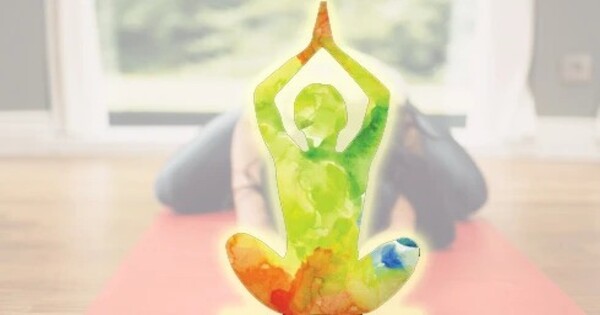According to a new study published in the Annals of Internal Medicine, older women suffering with urine incontinence can benefit from frequent, low-impact exercise, including yoga, stretching, and strengthening.
The study, coordinated by doctors from Stanford Medicine and the University of California, San Francisco, is part of a bigger attempt to find low-risk, low-cost treatments for one of the most frequent health issues that women encounter as they age.
After 12 weeks of a low-impact yoga exercise, study participants experienced approximately 65% fewer instances of incontinence. Women in a control group who performed stretching and strengthening activities saw a similar improvement during the same time period. According to the researchers, the advantages are comparable to those of incontinence drugs.
“Our study was testing the kind of yoga that just about anyone can do, with modifications for different physical abilities,” said the study’s senior author, Leslee Subak, MD, chair of obstetrics and gynecology at Stanford Medicine. “What I love about it is that it’s safe, inexpensive, doesn’t require a doctor and accessible wherever you live.” Because the trial was conducted partly during the COVID-19 pandemic, many participants received their yoga or exercise instruction via online meetings, exercising in their own homes, she noted.
Our study was testing the kind of yoga that just about anyone can do, with modifications for different physical abilities. What I love about it is that it’s safe, inexpensive, doesn’t require a doctor and accessible wherever you live.
Leslee Subak
The study’s lead author is Alison Huang, MD, a professor of medicine, urology, epidemiology, and biostatistics at UCSF. Urinary incontinence, which affects more than half of middle-aged women and up to 80% of 80-year-olds, can cause a wide range of other issues, including social isolation and bone fractures caused by falls. But there is aid.
“Part of the problem is that incontinence is stigmatized; we don’t talk about it,” said Subak, who is the Katharine Dexter and Stanley McCormick Memorial Professor III. “Or we hear legend that this is typical as you become older. In truth, it is fairly prevalent, but it is not unavoidable, and we have highly good treatments for it.
Addressing a common problem
Incontinence deserves good treatment because of the many ways it interferes with people’s lives.
“It takes away independence,” Subak said. “My patients will say, ‘I can’t stay with my kids or grandkids because I’m afraid I’ll wet the bed, and I can’t talk about it; it’s too embarrassing.'”
Patients may avoid activities that could boost their well-being, such as exercising and seeing friends. They are more likely to be admitted to a nursing home and to suffer certain serious medical problems such as hip fractures.
“Incontinence and overactive bladder are among the biggest risk factors for falls and fractures among older women,” Subak said. “You’re rushing to the bathroom at night — with the lights off — tripping and falling, and breaking a hip.”
Some factors that contribute to risk for incontinence can’t be changed, such as aging or having had children. But others are modifiable.
“A lot of my research has focused on weight loss and physical activity, which in fact are effective treatments,” Subak said. She became interested in studying yoga as a treatment after some of her patients told her it helped them.

Being active helps
The study contrasted two 12-week exercise programs: 121 people were randomly allocated to yoga and 119 to a physical conditioning control group. The participants were women who had urine incontinence and had symptoms at least once a day. Their ages ranged from 45 to 90, with a mean of 62.
During the yoga program, participants learned 16 hatha yoga poses designed to strengthen the pelvic floor in two 90-minute sessions each week. The pelvic floor is made up of muscles that create the basis of the pelvis and maintain its organs in place, such as the bladder and urethra. Participants were also requested to practice yoga for at least one hour per week outside of class and keep a practice journal.
Participants in the control group spent an equal amount of time in exercise classes, but their classes focused on nonspecific stretching and strengthening exercises that did not engage the pelvic floor. They were also asked to practice for an additional hour per week and keep a practice log. The study began with in-person classes, then transitioned to a videoconference format when the COVID-19 pandemic lockdowns began.
Participants reported when they leaked pee and classified each episode as urgency incontinence, which occurs when an overactive bladder leads a person to feel the need to urinate more frequently than normal, or stress incontinence, which occurs in response to abdominal pressure, such as coughing or sneezing. They also completed regular questions regarding their bladder function.
At the start of the trial, individuals experienced an average of 3.4 episodes of urine incontinence each day, with 1.9 urgency-type events and 1.4 stress-type episodes. At the end of the 12-week program, participants in the yoga group had 2.3 fewer incidents of incontinence per day on average. People in the physical conditioning group had 1.9 fewer incidents each day.
The two treatments are about equally effective, with both approaches reducing episodes of incontinence by around 60%, and the benefits from both treatments are meaningful, Subak said. Patients who would like to try these approaches can search for low-impact Iyengar yoga or low-impact exercise classes in their communities or online, she said, adding that instructors should be able to adapt the activity to participants’ physical limitations.
“I’m impressed that exercise did so well and impressed that yoga did so well,” Subak stated in response. “One of the take-home messages from this study is ‘Be active!'”
Other nonsurgical therapies for incontinence, such as medicines, often relieve symptoms by 30% to 70%, she said. If a patient inquired about the effectiveness of yoga in treating incontinence, Subak responded, “I think it’s a great idea to try it if you’re interested.” “It’s very low risk, and there’s potential for benefit not only for incontinence but also for your general well-being.”
















